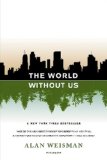Summary | Excerpt | Reviews | Beyond the Book | Readalikes | Genres & Themes | Author Bio

Critics' Opinion:
Readers' Opinion:
First Published:
Jul 2007, 336 pages
Paperback:
Aug 2008, 368 pages
 Book Reviewed by:
Book Reviewed by:
BookBrowse Review Team
Buy This Book
Within 10 years, the downside to this wonder substance was
apparent. Life Magazine coined the term "throwaway society," though the idea of
tossing trash was hardly new. Humans had done that from the beginning with
leftover bones from their hunt and chaff from their harvest, whereupon other
organisms took over. When manufactured goods entered the garbage stream, they
were at first considered less offensive than smelly organic wastes. Broken
bricks and pottery became the fill for the buildings of subsequent generations.
Discarded clothing reappeared in secondary markets run by ragmen, or were
recycled into new fabric. Defunct machines that accumulated in junkyards could
be mined for parts or alchemized into new inventions. Hunks of metal could
simply be melted down into something totally different. World War II—at least
the Japanese naval and air portion—was literally constructed out of American
scrap heaps.
Stanford archaeologist William Rathje, who has made a
career of studying garbage in America, finds himself continually disabusing
waste-management officials and the general public of what he deems a myth: that
plastic is responsible for overflowing landfills across the country. Rathje's
decades-long Garbage Project, wherein students weighed and measured weeks' worth
of residential waste, reported during the 1980s that, contrary to popular
belief, plastic accounts for less than 20 percent by volume of buried wastes, in
part because it can be compressed more tightly than other refuse. Although
increasingly higher percentages of plastic items have been produced since then,
Rathje doesn't expect the proportions to change, because improved manufacturing
uses less plastic per soda bottle or disposable wrapper.
The bulk of what's in landfills, he says, is construction
debris and paper products. Newspapers, he claims, again belying a common
assumption, don't biodegrade when buried away from air and water. "That's why we
have 3,000-year-old papyrus scrolls from Egypt. We pull perfectly readable
newspapers out of landfills from the 1930s. They'll be down there for 10,000
years."
He agrees, though, that plastic embodies our collective
guilt over trashing the environment. Something about plastic feels uneasily
permanent. The difference may have to do with what happens outside landfills,
where a newspaper gets shredded by wind, cracks in sunlight, and dissolves in
rain—if it doesn't burn first.
What happens to plastic, however, is seen most vividly
where trash is never collected. Humans have continuously inhabited the Hopi
Indian Reservation in northern Arizona since AD 1000—longer than any other site
in today's United States. The principal Hopi villages sit atop three mesas with
360° views of the surrounding desert. For centuries, the Hopis simply threw
their garbage, consisting of food scraps and broken ceramic, over the sides of
the mesas. Coyotes and vultures took care of the food wastes, and the pottery
sherds blended back into the ground they came from.
That worked fine until the mid-20th century. Then, the
garbage tossed over the side stopped going away. The Hopis were visibly
surrounded by a rising pile of a new, nature-proof kind of trash. The only way
it disappeared was by being blown across the desert. But it was still there,
stuck to sage and mesquite branches, impaled on cactus spines.
South of the Hopi Mesas rise the 12,500-foot San Francisco
Peaks, home to Hopi and Navajo gods who dwell among aspens and Douglas firs:
holy mountains cloaked in purifying white each winter—except in recent years,
because snow now rarely falls. In this age of deepening drought and rising
temperatures, ski lift operators who, the Indians claim, defile sacred ground
with their clanking machines and lucre, are being sued anew. Their latest
desecration is making artificial snow for their ski runs from wastewater, which
the Indians liken to bathing the face of God in shit.
Copyright © 2007 by Alan Weisman. All rights reserved.





The Funeral Cryer by Wenyan Lu
Debut novelist Wenyan Lu brings us this witty yet profound story about one woman's midlife reawakening in contemporary rural China.
Your guide toexceptional books
BookBrowse seeks out and recommends the best in contemporary fiction and nonfiction—books that not only engage and entertain but also deepen our understanding of ourselves and the world around us.